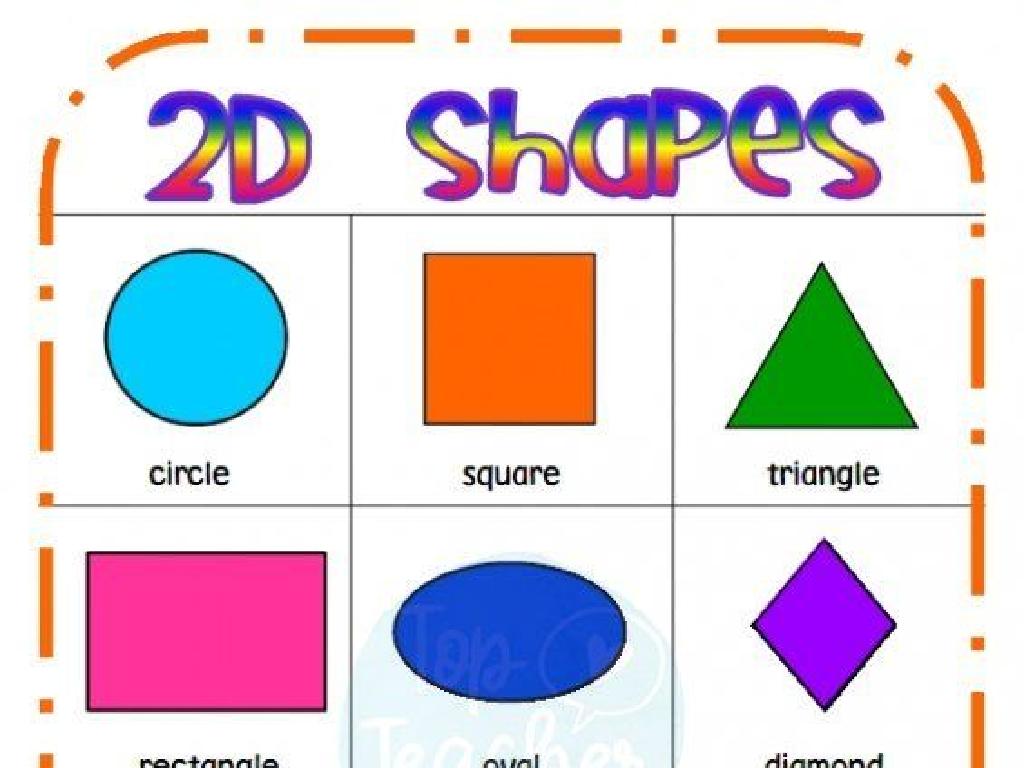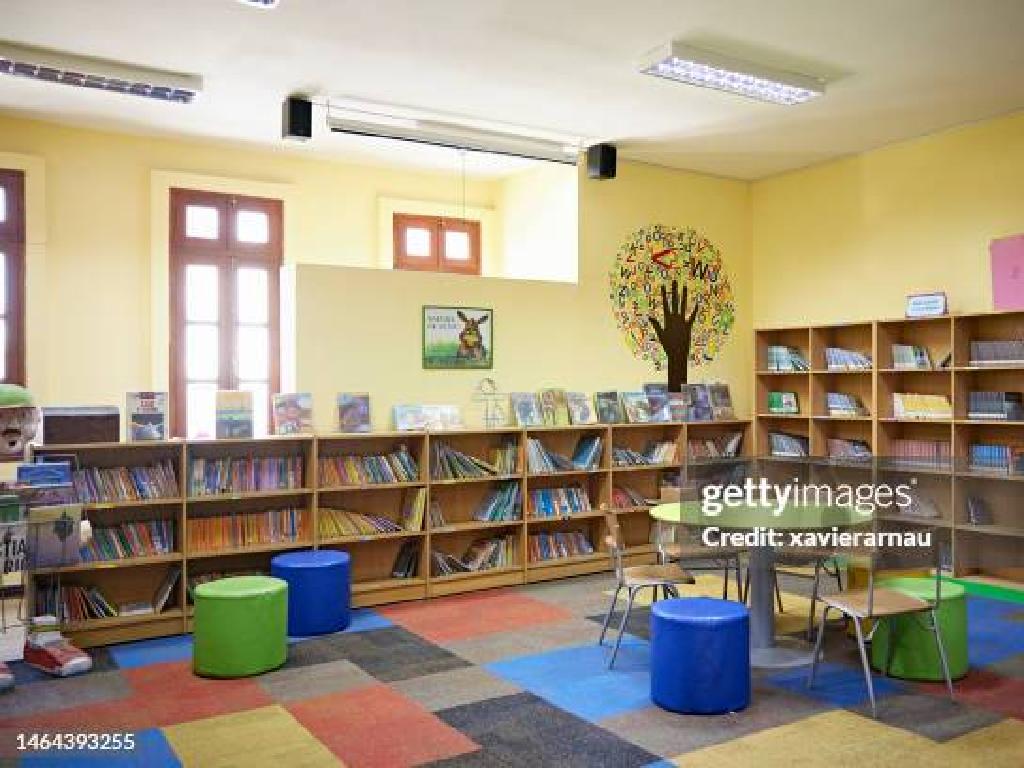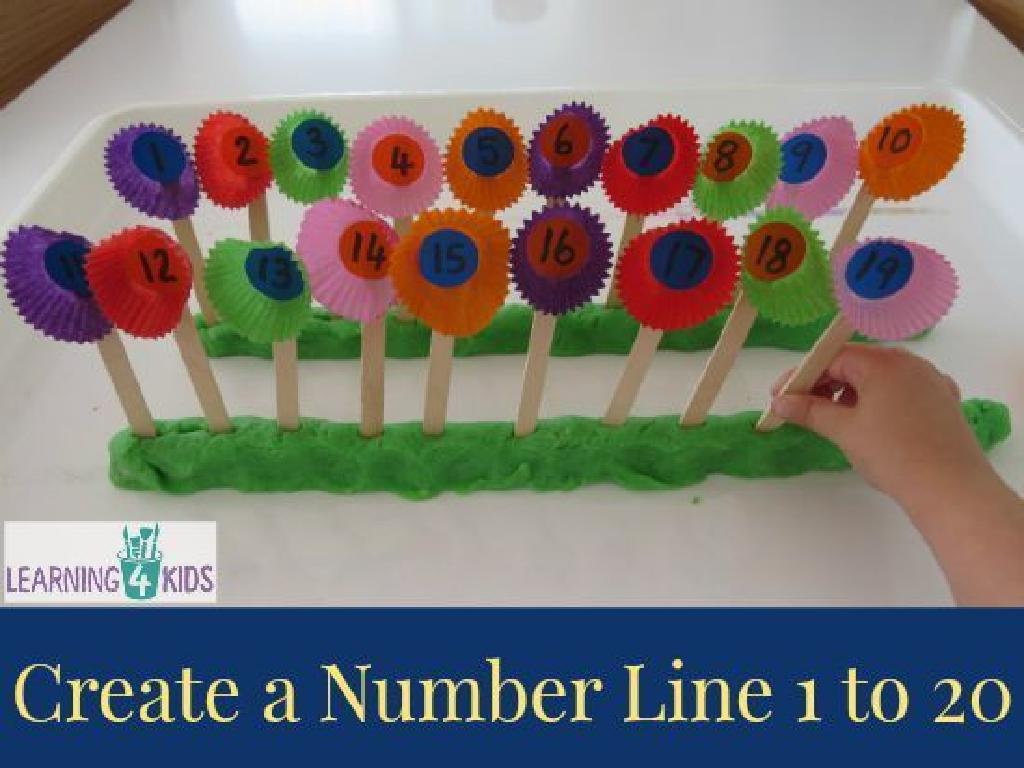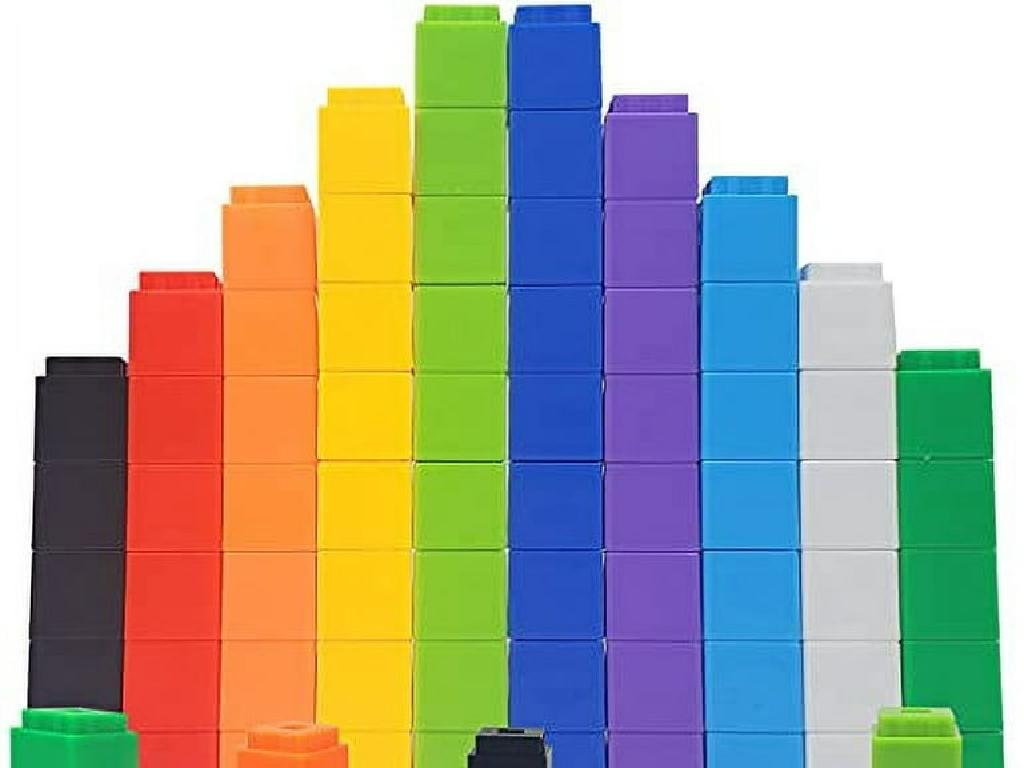Changes To Earth'S Surface: Volcanic Eruptions
Subject: Science
Grade: Second grade
Topic: Earth Events
Please LOG IN to download the presentation. Access is available to registered users only.
View More Content
Exploring Volcanic Eruptions
– Earth is always changing
– What is an ‘event’?
– An event is something that happens, often important
– Volcanic eruptions: a dramatic event
– When a volcano erupts, it spews out lava and ash
– How eruptions change Earth’s surface
– Eruptions can create mountains and change landscapes
|
This slide introduces the concept of Earth events with a focus on volcanic eruptions. Begin by explaining that the Earth is constantly changing, sometimes in small ways and other times through dramatic events. Engage the students by asking them to define an ‘event’ and discuss different types of events they may already know. Introduce volcanic eruptions as a powerful Earth event, explaining how they involve the release of magma from beneath the Earth’s crust. Highlight the impact of eruptions on the Earth’s surface, such as the creation of new landforms like mountains and the alteration of existing landscapes. Use simple language and relatable examples to help second graders grasp these concepts.
What is a Volcano?
– Volcanoes are like mountains
– But they can open to hot liquid rock inside Earth
– They have a pool of molten rock
– This hot liquid is called magma
– Eruptions happen from pressure
– Too much pressure makes the volcano erupt
– Gases and rocks burst out
– Lava and ash shoot up and may flow over
|
Begin the lesson by explaining that a volcano is similar to a mountain but with a unique feature: it has an opening that leads to hot liquid rock beneath the Earth’s surface, known as magma. When the pressure inside the volcano builds up, it can cause an eruption, which is when gases, rocks, and ash are expelled violently into the air or flow over the sides. Use simple terms and analogies suitable for second graders, such as comparing the buildup of pressure to a soda bottle being shaken. Emphasize safety and respect for nature’s power, and consider showing illustrations or videos of non-violent eruptions to help them visualize the concept.
Parts of a Volcano
– Volcano parts introduction
– Magma Chamber: underground rock pool
– Think of it like a big hot soup under the Earth’s surface.
– Vent: pathway for magma
– It’s like a tunnel inside the volcano where magma travels up.
– Lava and Ash: what comes out
– Lava is the hot liquid that flows out, and ash is the dusty clouds after an eruption.
|
This slide is aimed at helping second-grade students understand the different parts of a volcano. Start by explaining that a volcano is not just a mountain that erupts, but it has different parts that work together to cause an eruption. The Magma Chamber is compared to a big underground pool of liquid rock, which helps students visualize the concept. The Vent is described as a passage, similar to a tunnel, through which magma moves up towards the Earth’s surface. Emphasize that when the magma reaches the surface, it’s called lava, and the ash is what we see in the air during an eruption. Use diagrams or pictures of volcanoes to help illustrate these parts. Encourage students to ask questions and think about how these parts work together during a volcanic eruption.
Types of Volcanic Eruptions
– Volcanoes erupt differently
– Explosive eruptions are loud
– They can throw rocks and ash up high
– Non-explosive eruptions are calmer
– These eruptions gently pour out lava
– Lava flows from non-explosive eruptions
– Lava flows like a river of hot liquid rock
|
This slide aims to teach second-grade students about the different types of volcanic eruptions. Begin by explaining that not all volcanoes erupt in the same way; some can be very loud and explosive, while others are much quieter. For explosive eruptions, describe how they can shoot rocks and ash high into the sky, which can be dangerous. For non-explosive eruptions, explain how they produce lava flows that move much slower and are less violent. Use simple terms and analogies that second graders can understand, such as comparing lava to a river, but very hot. Encourage students to think about the differences and ask questions about why some volcanoes might erupt one way and not the other.
Effects of Volcanic Eruptions on Earth
– Eruptions change Earth fast
– New mountains can form
– Magma pushes up and hardens into a mountain
– Ash can cover cities and fields
– Volcanic ash can travel far and blanket areas
– People and crops can be affected
– Ash can make it hard to breathe and harm plants
|
This slide aims to explain the immediate and impactful changes that volcanic eruptions can have on Earth’s surface. Emphasize that these natural events can happen quickly and have the power to create new landforms, such as mountains. Discuss how the ash ejected during eruptions can spread over large areas, covering cities, towns, and agricultural fields, which can have significant effects on human populations and food production. Use simple language and concrete examples to help second graders grasp these concepts. You might compare the ash to a heavy blanket of snow that can cover everything. Encourage students to think about how these changes would affect their daily lives if they happened nearby.
Staying Safe During Volcanic Eruptions
– Have an emergency plan ready
– Know where to go and what to take with you
– Wear masks to avoid ash
– Ash can make it hard to breathe, so masks are important
– Listen to warnings carefully
– Officials will tell us when it’s not safe
– Evacuate quickly if needed
|
This slide is aimed at teaching second-grade students about safety measures during volcanic eruptions. It’s crucial to emphasize the importance of being prepared with an emergency plan, which includes knowing safe places to go and essential items to bring along. Explain the role of masks in protecting our lungs from volcanic ash. Highlight the importance of listening to authorities and the need to evacuate promptly if the situation calls for it. Use simple language and examples to ensure the students can understand and remember these safety tips. You can also discuss with the class what they might include in their emergency kits and where they might go if they had to leave their home quickly.
Famous Volcanic Eruptions
– Mount St. Helens’ big eruption
– In 1980, this volcano in the USA exploded with power.
– Pompeii buried by Mount Vesuvius
– In 79 AD, this ancient city got covered in volcanic ash.
– Eruptions teach scientists
– Studying old eruptions helps us understand volcanoes better.
– Volcanoes change Earth’s surface
– Volcanoes can create new land and change landscapes.
|
This slide introduces students to the concept of volcanic eruptions and their impact on Earth’s surface by discussing two famous historical events. Mount St. Helens’ eruption in 1980 serves as a recent example of the explosive power of volcanoes, while the destruction of Pompeii in 79 AD illustrates the long-term effects on human settlements. Emphasize the importance of these events in helping scientists learn more about volcanoes and the changes they can cause to our planet. Encourage students to think about how the Earth is constantly changing and the role that natural events like volcanic eruptions play in shaping the environment.
Volcanic Eruption Experiment
– Create a mini volcano eruption
– Use baking soda and vinegar
– Safe household items to mimic lava flow
– Learn about pressure in volcanoes
– Pressure builds up underground until it erupts
– Observe eruption simulation
– Watch how the ‘lava’ flows out of our volcano
|
This slide introduces a hands-on class activity where students will simulate a volcanic eruption using baking soda and vinegar. The experiment is designed to help students visualize the concept of pressure build-up and release, which is a key aspect of volcanic eruptions. Teachers should prepare small containers to act as the ‘volcano’, and guide students through the process of adding baking soda followed by vinegar to cause the ‘eruption’. Discuss with students how this represents the real process inside a volcano. Ensure safety measures are in place and that students understand they are working with materials that should not be ingested. Provide a detailed explanation of the steps and encourage students to observe the reaction carefully. After the experiment, facilitate a discussion about their observations and relate it back to how real volcanoes work.
Class Activity: Create Your Volcano!
– Become a junior geologist
– Build a volcano with clay or playdough
– Shape your volcano around a bottle
– Simulate an eruption
– We’ll mix vinegar and baking soda in the bottle
– Observe and learn
– Watch how pressure builds up and causes ‘lava’ to flow out
|
This hands-on activity is designed to help second-grade students understand the concept of volcanic eruptions through a fun and interactive model-building exercise. Provide each student with clay or playdough to construct their own volcano around a small bottle. Once the models are built, demonstrate how to create a simple chemical reaction using vinegar and baking soda to simulate an eruption. Discuss with the students how this reaction is similar to the build-up of pressure in a real volcano that leads to an eruption. Encourage students to observe the ‘lava’ flow and ask questions about the process. This activity not only makes learning about Earth events engaging but also integrates basic principles of chemistry. Make sure to have safety measures in place, such as protective eyewear and clear instructions to avoid any mishaps.
Volcanic Eruptions: Recap & Questions
– What we learned about eruptions
– Volcanoes can change Earth’s surface quickly.
– Parts of a volcano
– Can you recall names like ‘crater’ or ‘magma’?
– Living near a volcano
– Discuss what it’s like to live by a volcano.
– Safety measures
– Always have an evacuation plan ready.
|
This slide aims to summarize the lesson on volcanic eruptions and engage students in a reflective discussion. Start by recapping the key points about how volcanic eruptions can rapidly alter the landscape. Ask students to name different parts of a volcano to reinforce their understanding. Encourage them to think critically about the implications of living near a volcano, such as the importance of being aware of evacuation routes and having an emergency plan. This discussion will help solidify their knowledge and ensure they understand the practical aspects of the topic.





